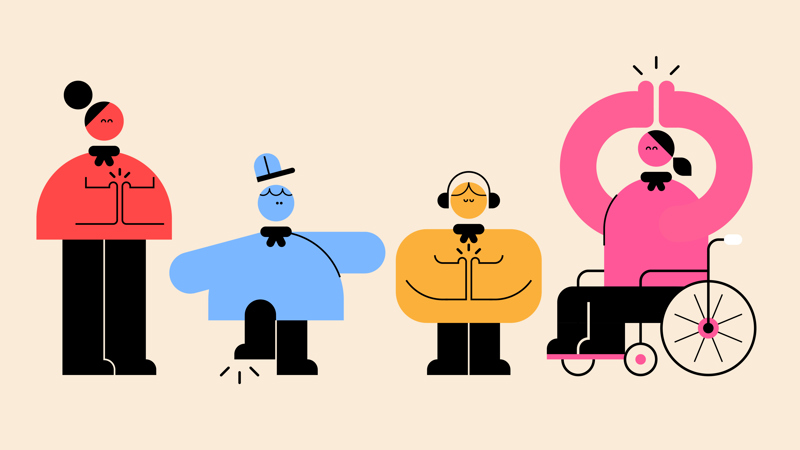
Play a musical name game
- Sit or stand together in a large circle.
- Explain that a rhythm is a repeated pattern of sounds in music.
- Play or sing some examples of music with a three-beat rhythm.
- Sing some of the lines from the song with everyone.
- Play some more tunes and identify the rhythm together by clapping or tapping.
- Choosing one song with a three-beat rhythm (Queen’s We Will Rock You works well), listen and then try to beat the rhythm back. You could use clapping, hitting the floor or any other ways to make a sound.
- Explain that you will beat out a short three-beat rhythm such as clap, clap, slap (the floor or your lap).
- Start the rhythm and let everyone repeat it. Continue the rhythm and repeat until everyone knows the rhythm.
- Stop the rhythm and explain that this time you will all do the rhythm together, so you will do it with them. Practise this a couple of times.
- Keep the rhythm going. One by one, going around the circle, participants need to say their name on the fourth beat of the rhythm (so clap, clap, slap [name]).
- This time going around the circle, get everyone to say ‘My name is […]’ to the rhythm.
- Once everyone in the circle has said their name, go around the circle again. This time after someone says ‘My name is [...]’, the rest of the group will say ‘Hello […]’.
- Now, go around the circle again, but this time after someone says ‘My name is [...]’ everyone needs to stop for a moment. That person then needs to come up with their own rhythm and then the group will repeat that rhythm before returning to the original rhythm and continuing around the circle.
- To test whether everyone remembers each other’s names, do another round. This time, as everyone is doing the rhythm, one person should say ‘I pass to [...]’
- After completing the game, ask if anyone would like to try starting a longer rhythm.
- Participants could then lead a rhythm for the rest of the group to copy.
Reflection
This activity helps us to learn each other’s names while practising some basic rhythms. How did you find the activity? If you made a mistake, were you able to join back in and keep going? Do you remember anyone’s name? Why is it good to learn and remember people's names?
Safety
All activities must be safely managed. You must complete a thorough risk assessment and take appropriate steps to reduce risk. Use the safety checklist to help you plan and risk assess your activity. Always get approval for the activity, and have suitable supervision and an InTouch process.
- Active games
The game area should be free of hazards. Explain the rules of the game clearly and have a clear way to communicate that the game must stop when needed. Take a look at our guidance on running active games safely.
- Music and films
Make sure music and films are age appropriate for the youngest person present.
To make this easier, you can play fewer rounds or reduce the different types of sounds (for example, only use clapping). To make this more challenging you can speed up the rhythm.
- Choose movements that everyone will be able to do – for instance, clapping or stamping instead of snapping fingers.
- Allow participants to use sticks to beat the rhythm on a table.
- For young people with hearing impairments, use sounds or items that will vibrate, so they can feel the sounds instead of hearing them.
All Scout activities should be inclusive and accessible.
Do this activity again, but this time try doing a vocal rhythm with sounds or words. Can everyone make and repeat a vocal rhythm?
Young people have the option to lead their own rhythms.
